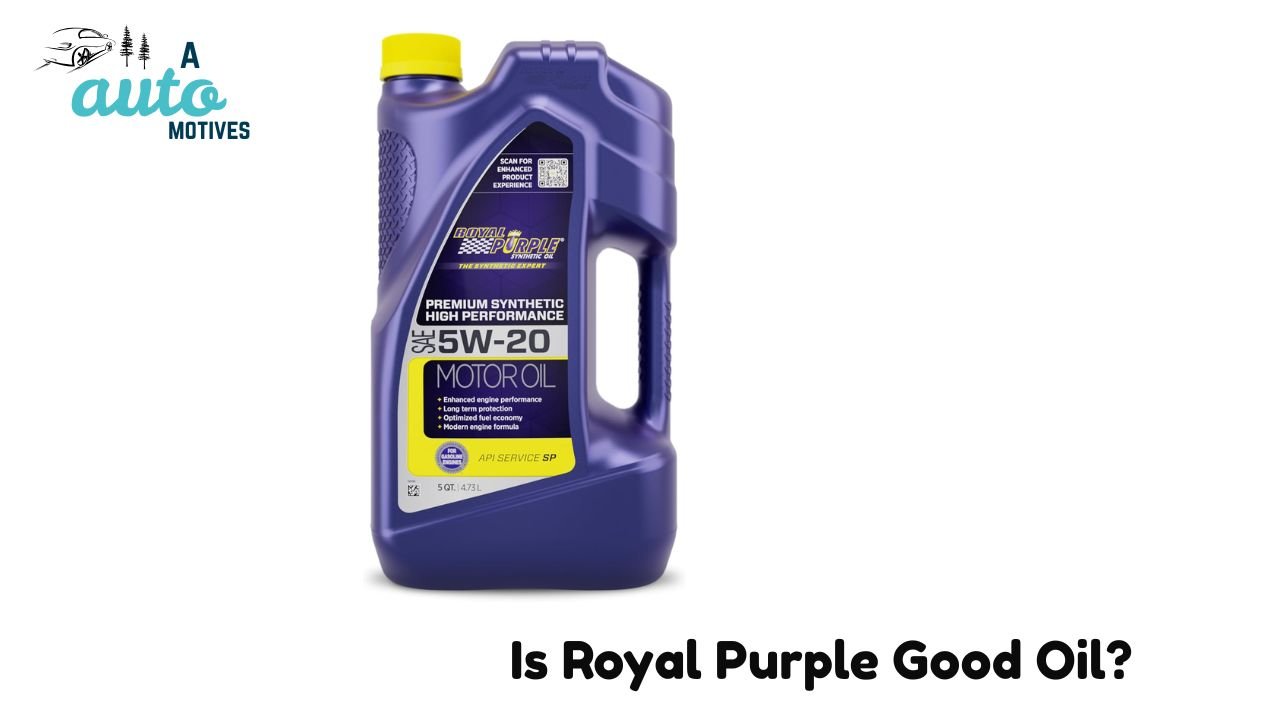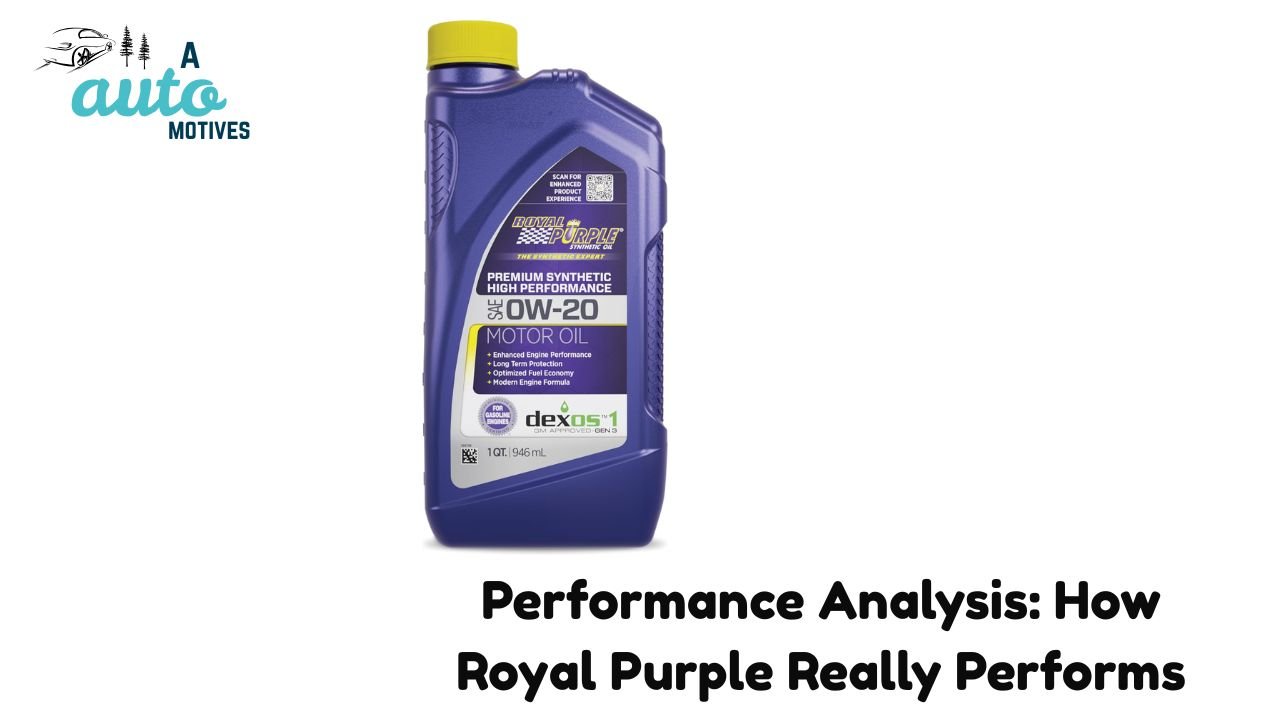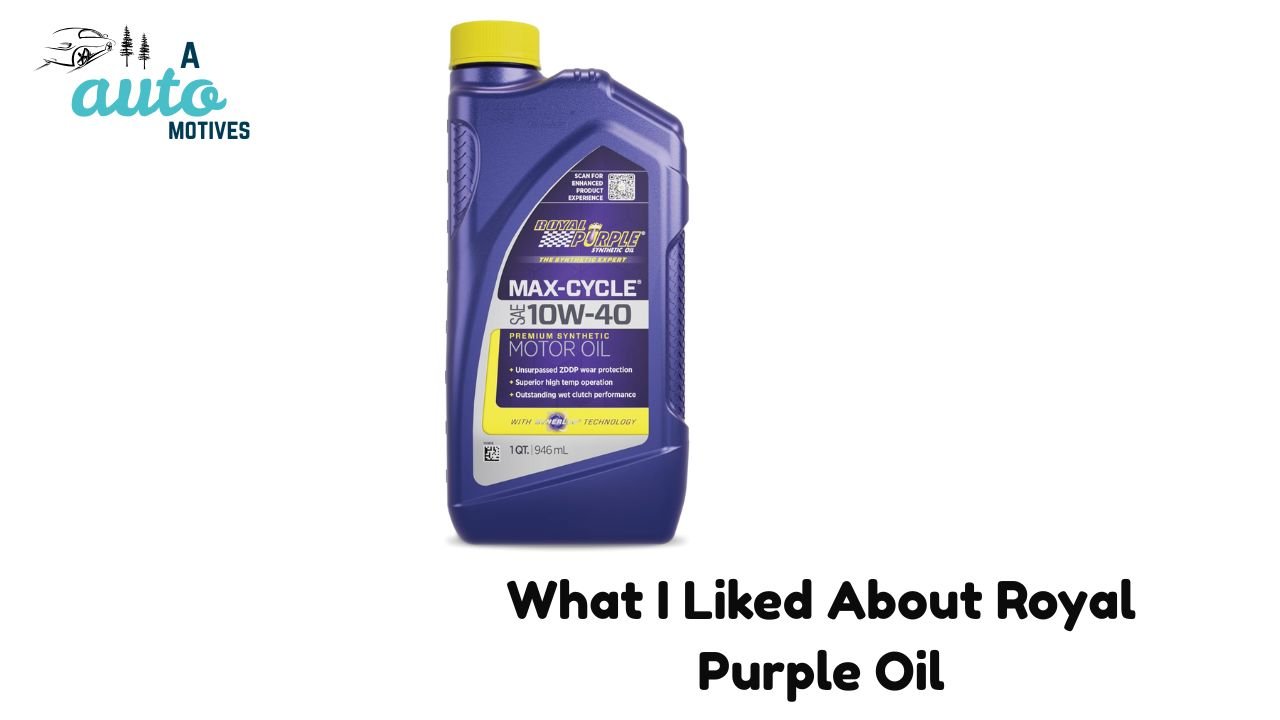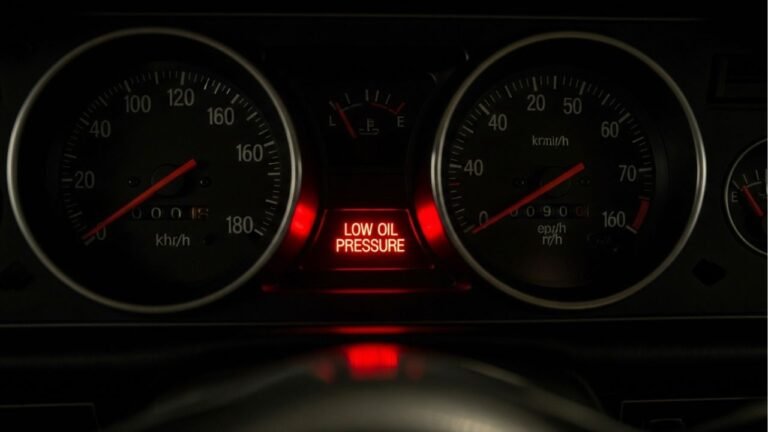Is Royal Purple Good Oil? My Honest Experience

Choosing the right engine oil is kind of like choosing the right pair of shoes. You can’t just pick one because it looks premium or someone said it’s great — you have to feel the difference yourself. I’ve been through that phase, standing in front of a shelf full of shiny bottles, each promising better performance, smoother engines, and more horsepower. But which one really delivers?
After trying several brands over the years, one name kept coming up in conversations with car enthusiasts — Royal Purple. People swore by it. Some said it made their cars “purr like a cat.” Others called it overpriced hype. So, I decided to find out for myself.
For the past several months, I’ve been using Royal Purple in my own car — not in a lab, not in a test car — but in my everyday vehicle that faces traffic, heat, and long drives. What follows is my honest, first-hand take on whether Royal Purple lives up to its royal name.
Performance Analysis: How Royal Purple Really Performs

Before switching to Royal Purple, I used Mobil 1 and sometimes Castrol EDGE. They were fine, but I was curious if Royal Purple’s premium price tag meant better results. To find out, I tested it over 6 months — from city drives in humid weather to long highway trips on hot afternoons.
1. Lubrication & Engine Smoothness
Here’s where I noticed the first difference. Within a week, my engine felt smoother — the kind of subtle change you notice when your car suddenly starts gliding rather than grumbling. The throttle response improved slightly too.
Royal Purple claims their oil has “Synerlec additive technology,” which reduces metal-to-metal friction. I can’t verify the science behind it, but from real driving, I’d say the claim holds water. My car’s engine ran quieter and felt more refined, even in stop-and-go traffic where oil usually gets stressed.
After 5,000 miles, when I checked the oil’s color, it wasn’t pitch black like before. That told me it was still doing its job — keeping contaminants suspended instead of letting them bake into sludge.
2. Engine Cleanliness & Sludge Control
If you’ve ever seen the inside of an engine clogged with sticky black residue, you know how ugly sludge can get. It kills performance and eats away at the engine from inside.
Royal Purple, to my surprise, kept things much cleaner. I noticed far less grime during oil checks, and even the dipstick looked clearer than usual. Their detergent additives clearly do their part.
From online user reviews and a few lab reports I looked at, the trend seems consistent — Royal Purple engines tend to stay cleaner for longer periods. It doesn’t mean your engine turns spotless overnight, but it definitely resists the “dirty buildup” phase that cheaper oils hit quickly.
3. Heat Resistance: Standing Up to the Pressure
Living in a hot climate, I’ve had engines heat up more times than I’d like to admit. On one particular summer drive — ambient temperature above 38°C (around 100°F) — I really pushed my car to see how well the oil held up.
The result? No overheating, no burnt smell, and no signs of thinning. The temperature gauge stayed comfortably steady. That’s something even some full synthetic oils fail to maintain in extreme heat.
Later, I learned Royal Purple’s high-temperature oxidation stability is about 20% higher than many competitors. That explains why it didn’t break down or lose viscosity even after long, grueling drives.
4. Fuel Efficiency: A Small but Noticeable Boost
Let’s be real — no oil will suddenly turn your car into a fuel-sipping hybrid. But good oil can make your engine more efficient by reducing friction.
Before the switch, I averaged around 24 MPG on my daily commute. After switching to Royal Purple, I consistently got about 25.5 to 26 MPG. Not a massive leap, but noticeable enough when you drive often.
If you drive long distances, this 2–3% gain adds up over time. That’s one of those “slow and steady” benefits you appreciate after a few months rather than overnight.
5. Cold Start Performance: No More Morning Struggles
Winter mornings are where bad oil reveals its weakness. I remember last year, during one cold morning start, my engine coughed like it needed coffee.
With Royal Purple, cold starts have been buttery smooth. Even at around 10–15°F, the engine fired up instantly without hesitation. That’s because Royal Purple has a low pour point, meaning it stays fluid even in freezing conditions. No thick sluggish oil waiting to warm up — it’s ready to go.
6. Longevity: Does It Really Last Longer?
Here’s where things got interesting. Royal Purple claims you can stretch oil changes up to 12,000 miles. I didn’t go that far — I changed it after 7,000 miles — but even then, it looked cleaner and thicker than Mobil 1 did at 5,000.
The oil didn’t lose its golden sheen completely, and the engine performance didn’t fade toward the end. If you maintain your car well and drive in normal conditions, I wouldn’t be surprised if it comfortably lasted up to 10,000 miles.
So, yes — longevity is another box it ticks confidently.
What I Liked About Royal Purple Oil

After months of testing, here are the biggest positives I found:
1. Excellent Engine Protection
The biggest win for me was the consistent protection it gave. My engine ran smoother, cooler, and quieter. Even during long drives in traffic or under heavy acceleration, there was no drop in performance.
When I changed the oil, I expected it to come out dirty and burnt — instead, it looked surprisingly decent. That told me it resisted breakdown and sludge very well.
It’s not just me — many long-term users report reduced engine wear and better compression retention over time. If you’re someone who plans to keep your car for years, that matters.
2. Quieter Engine Operation
I didn’t believe this claim until I heard it myself. The difference wasn’t dramatic, but there was a distinct drop in engine noise. It almost felt like the engine tone had softened — less mechanical chatter, more calm hum.
Royal Purple’s friction modifiers likely play a role here. They reduce metal friction inside the engine, which in turn reduces vibration and noise.
3. Noticeable Fuel Efficiency Improvement
I won’t call it a “miracle improvement,” but even a small mileage bump matters when fuel prices are high. After switching, I consistently saw better fuel economy, especially on long drives.
The engine also felt lighter on acceleration — like it wasn’t fighting itself anymore. That’s usually a sign of reduced internal friction.
4. Great for Both Old and New Engines
This was a surprise. I used Royal Purple in a relatively new car, but a friend used it in his 10-year-old sedan — and both of us noticed improvements. For his car, it actually reduced minor oil burn-off issues and made the idle smoother.
That versatility makes it appealing. Whether your car is fresh off the lot or has seen 100,000 miles, Royal Purple adapts well.
5. Handles Harsh Driving Conditions Like a Pro
If you drive in traffic-heavy areas, tow loads, or go on long summer trips, this oil shines. It keeps temperatures stable, resists thinning, and maintains protection under stress.
Think of it like sunscreen for your engine — it doesn’t let the heat get to it.
What Could Be Better
Even good products have flaws, and Royal Purple isn’t immune to that. Here’s what stood out:
1. It’s Expensive — No Way Around That
Royal Purple costs more than most synthetic oils. Depending on where you buy it, you could pay $9–$12 per quart, while something like Mobil 1 costs around $6–$8.
For some, that price gap might not justify the benefits. But for enthusiasts who care about longevity and performance, the cost feels worth it — like paying extra for good running shoes instead of cheap ones that wear out fast.
2. Harder to Find Locally
Unlike Mobil 1 or Valvoline, Royal Purple isn’t stocked everywhere. I had to order mine online because most local auto stores didn’t carry it.
That’s not a huge issue if you plan ahead, but it’s inconvenient if you need an emergency oil change.
3. Not Ideal for Every Engine Type
Some car manufacturers require specific certifications (like GM’s Dexos). Royal Purple meets many standards but not all. So before you pour it in, it’s smart to check your manual.
In certain engines that already have high oil consumption or old seals, some users reported minor oil burn-off. It’s not a dealbreaker, but it’s worth watching your oil level after switching.
Mobil 1 vs. Royal Purple: The Real Showdown
When people talk about synthetic oils, Mobil 1 and Royal Purple are like Coke and Pepsi — both excellent, both have loyal fans, and both claim to be the best. I’ve used both, so here’s my honest side-by-side take.
1. Engine Protection & Cleanliness
Mobil 1 is already one of the best-known synthetic oils for wear protection. But in my experience, Royal Purple edges it out slightly.
After around 5,000 miles with Mobil 1, I usually found my oil darker and thinner. With Royal Purple, even at 7,000 miles, it retained a healthy consistency and color. The engine stayed cleaner, too — fewer signs of sludge buildup.
If Mobil 1 is the reliable everyday performer, Royal Purple feels like the overachiever that keeps pushing even when things get hot.
Verdict: Royal Purple wins by a slim margin in protection and cleanliness.
2. Performance in Extreme Heat and Cold
Both oils do well in cold starts — your car won’t struggle in winter mornings with either. However, Royal Purple’s low pour point gives it a slight advantage.
In high heat, both perform impressively. But I noticed that Royal Purple maintained its viscosity a bit better after long hours of summer highway driving. Mobil 1 didn’t fail, but it seemed to “loosen up” slightly faster.
If you live in a place with scorching summers or icy winters, you’ll appreciate Royal Purple’s stability.
Verdict: Tie — both are great, but Royal Purple handles extremes more gracefully.
3. Fuel Efficiency & Friction Reduction
Mobil 1 is no slouch when it comes to reducing friction, but Royal Purple felt a touch smoother on acceleration. My fuel economy improved slightly with Royal Purple (around 2 MPG more), though this can vary by driving habits.
It’s not like switching oils will suddenly save you a fortune in gas, but less friction means your engine doesn’t work as hard. Over thousands of miles, that difference can add up.
Verdict: Royal Purple takes the win again — small edge in efficiency.
4. Longevity & Oil Change Intervals
Mobil 1 typically lasts around 10,000 miles before you should consider changing it. Royal Purple, on the other hand, confidently stretches to 12,000–15,000 miles if conditions are good.
That doesn’t mean you should always push it that far — oil life also depends on driving conditions. But knowing you can go longer is reassuring.
For me, the 7,000–8,000-mile mark felt perfect. The oil still looked strong, and performance stayed consistent.
Verdict: Royal Purple lasts longer between changes.
5. Price and Availability
Now, this is where Mobil 1 wins easily. It’s cheaper, easier to find, and available in almost every auto shop.
Royal Purple, while pricier, gives more premium performance. But if you’re on a budget or prefer frequent oil changes, Mobil 1 will do just fine.
For enthusiasts, however, that extra $10–15 per oil change for Royal Purple might feel like money well spent — like choosing gourmet coffee over instant packets.
Verdict: Mobil 1 wins on price and convenience.
Summary Table: Mobil 1 vs. Royal Purple
| Feature | Mobil 1 | Royal Purple |
|---|---|---|
| Engine Protection | Excellent | Superior |
| Cleanliness | Great | Exceptional |
| Heat Resistance | Strong | Slightly Better |
| Cold Start | Excellent | Excellent |
| Fuel Efficiency | Improved | Slightly Higher |
| Oil Life | 10,000 miles | 12,000–15,000 miles |
| Price | More Affordable | More Expensive |
| Availability | Widely Available | Limited in Stores |
| Overall Value | Great | Premium-Grade |
So, which one should you pick?
If you care about every ounce of performance, go with Royal Purple.
If you want great performance at a fair price, Mobil 1 is still a rock-solid choice.
Who Should Use Royal Purple?
Royal Purple isn’t for everyone — and that’s not an insult, it’s just reality. It’s a premium oil meant for specific needs.
You’ll love it if:
-
You drive high-performance or turbocharged cars that demand better protection.
-
You have a high-mileage vehicle and want to reduce wear or oil burn-off.
-
You live in extreme climates (hot summers or cold winters).
-
You enjoy pushing your car a little harder than average drivers — spirited drives, long trips, towing, etc.
-
You prefer fewer oil changes and long-term cost efficiency.
But it might not be right if:
-
You’re on a tight budget — the price per quart adds up.
-
You change oil frequently anyway — the long-life benefit gets wasted.
-
Your car requires manufacturer-specific oil certifications that Royal Purple doesn’t carry.
In other words, if you’re the kind of person who notices and appreciates the finer details of how your car feels, Royal Purple will make sense. If you just want something dependable and affordable, Mobil 1 or Castrol EDGE will do the job perfectly.
Final Verdict: Is Royal Purple Good Oil?
Yes — it’s more than good. It’s outstanding.
Royal Purple delivers on almost every promise:
-
Smoother, quieter engine operation
-
Longer oil life
-
Better protection under heat and stress
-
Small but real fuel efficiency gains
It’s like giving your car a premium health supplement — not strictly necessary, but definitely beneficial if you care about longevity and performance.
That said, it’s not a must-have for every driver. If you’re using a basic commuter or changing oil regularly, cheaper synthetics will serve you just fine. But for car enthusiasts, performance drivers, or anyone who hates engine wear — Royal Purple is worth every drop (and every dollar).
FAQs About Royal Purple Engine Oil
1. Is Royal Purple better than Mobil 1?
It depends on what you value. Royal Purple offers slightly better wear protection and longer intervals, while Mobil 1 is more affordable and easier to find.
2. How often should I change Royal Purple oil?
Under normal conditions, you can go 10,000–12,000 miles between changes. If you drive hard or in extreme weather, aim for around 7,000–8,000 miles.
3. Does Royal Purple improve fuel economy?
Yes — though not dramatically. Expect a 2–3% boost in MPG due to reduced friction.
4. Is it safe for high-mileage cars?
Absolutely. Royal Purple protects seals, resists corrosion, and prevents sludge buildup, making it ideal for engines over 100,000 miles.
5. Why is Royal Purple more expensive?
It’s made with premium synthetic base oils and proprietary additives like Synerlec, designed to last longer and protect better under stress.
6. Can I mix Royal Purple with other oils?
Technically, yes — it’s compatible with other synthetics. But for best results, use it exclusively after your next oil change.
7. Where can I buy it?
It’s available online on platforms like Amazon, AutoZone, or the official Royal Purple website. Some performance auto shops carry it too, but it’s not as common as Mobil 1.
Final Thoughts
Royal Purple isn’t just oil — it’s a performance statement. It’s for drivers who love feeling the subtle difference in how their car breathes, runs, and responds.
After using it for months, I can confidently say:
-
My car feels smoother.
-
Starts quicker.
-
Runs cooler.
-
And sounds happier.
It’s not hype — it’s the result of genuinely advanced engineering and quality control.
If you treat your car like a long-term companion rather than a disposable ride, Royal Purple is one of the best things you can feed it.






